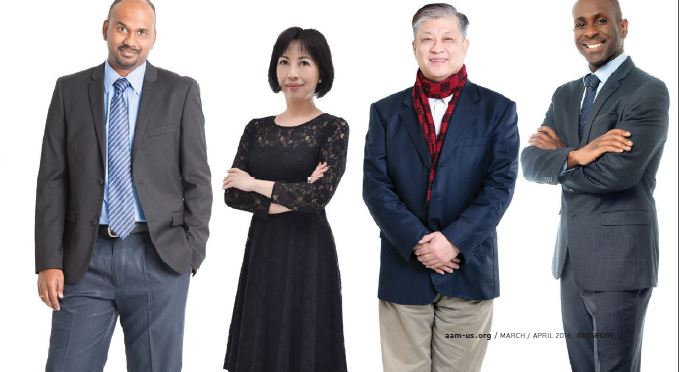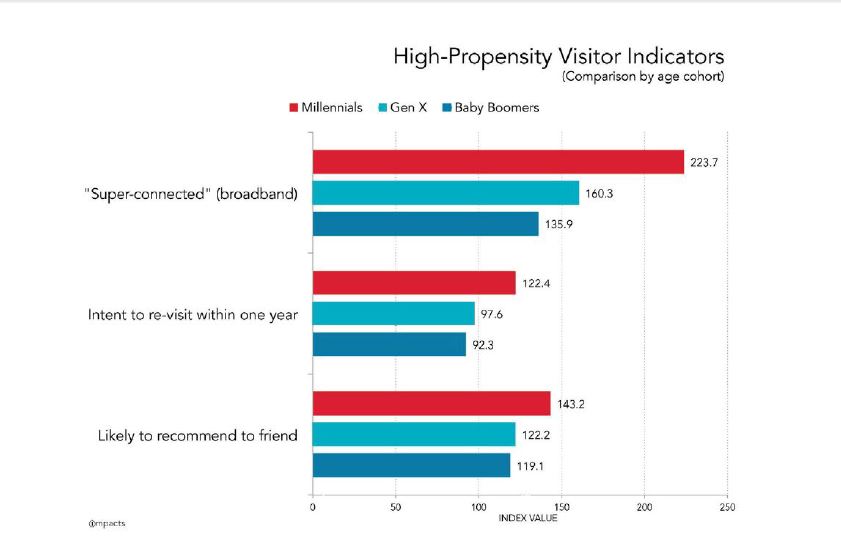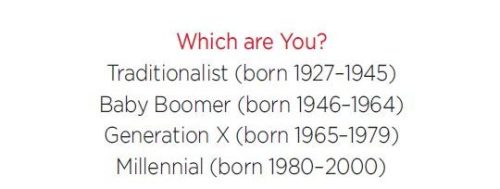
This article originally appeared in the March/April 2016 issue of the Museum magazine.
What Millennials want from the museums that employ them, and why museums should care.
It seems the museum field is abuzz with insights on how to best engage Millennials as visitors, donors and members. But this generation’s advent as a demographic powerhouse doesn’t only affect how organizations market, fundraise, create programs and generally function externally, it also calls for big changes in how organizations must operate internally. This organizational evolution includes embracing Millennial perspectives in staff meetings and within day-to-day operations. And, although it’s a topic that all too often inspires cricket chirp—inducing silence among leaders—it also means thinking about the current and future role of Millennials in the boardroom.
As a Millennial, I’d like to share some insights into my generation and how we can make a valuable contribution to museums.
Millennials are not coming. Millennials are here.
However you identify these under-35-year-olds working in your museum—Millennials, Generation Y, Generation “Me” or Echo Boomers—one thing is for certain: we function differently than older generations in the workplace. Members of Generation Y (born roughly between 1980 and 2000) have a different value set and method of communicating than the generations that came before us. In fact, if you are a Traditionalist, a Baby Boomer or even a member of Generation X (see chart page 41) you may find that the behavior and priorities of members of Generation Y are directly at odds with your own workplace desires—or, at least, in conflict with business as usual.
If anything, the sheer size of Generation Y makes us hard to ignore. According to the US Census Bureau, Millennials conservatively number 83.1 million and outnumber Baby Boomers by nearly 10 million people. This gap is widening as more and more Millennials immigrate to the United States. Generation Y represents the largest generation in human history, and—for better or worse—is the generation that is predicted to hold the age demographic reins for longer than any other generation before. The US Census Bureau reported that Millennials surpassed Generation X as the largest share of the American workforce in 2015, and Millennials are predicted to make up a full 50 percent of the global workforce by 2020!
Millennial Behaviors and Perspectives
Studies have found that Millennials possess some distinct attributes that are likely to cause a bit of cross-generational clash—and these differences may account for the communication challenges among museum employees, as well as the absence of Millennials in boardrooms. But while we starry-eyed, tech-savvy, diverse (more than 40 percent of us are from a minority race or ethnic group), entrepreneurial workers may have a thing or two to learn from older generations in the workplace, we bring with us a new way of thinking that can benefit any organization.
Indeed, many of the most frequent complaints regarding Millennials correspond with behaviors and perspectives that may serve to strengthen our museums and cultural institutions in the long run.
Constantly Connected
Generation Y employees have their eyes glued to their smartphones and are constantly on social media. It’s a popular gripe, and it’s warranted. We Millennials are a connected bunch. According to recent studies, a full 90 percent of us are active on social media and 85 percent of us own smartphones that we touch 45 times a day.
However…this very connectedness can increase positive word-of-mouth endorsement for museums, resulting in visits, donations and membership opportunities. Recent research shows that Millennials taking the lead in digital connectivity is a plus for museums. At IMPACTS Research, we define a high-propensity visitor as someone who demonstrates the demographic, psychographic and behavioral attributes that indicate an increased likelihood of visiting a museum. In terms of repeat visits, Millennial visitors are a museum’s most loyal (see chart). And, thanks to their constant connectivity, this generation is most likely to do work for us when it comes to encouraging others to visit our museums. IMPACTS data indicate that what people say about your museum is nearly 13 times more important in driving your reputation than are things you say about yourself (e.g., advertising). More than ever, positive word of mouth matters. Millennials are the most likely to recommend a museum to a friend and revisit sooner.
And…Millennial leaders provide valuable insight that helps connect cultural institutions with other high-impact Millennials. Engaging Millennials isn’t merely a communication medium opportunity to be solved by investing in social media. Engaging Millennials requires new ways of thinking about marketing, development, human resources, operations…and even membership benefits. Tapping into the perspectives of Millennials in leadership positions— particularly on the board—regarding their own peer group and generational mindset can help remove guesswork and increase efficiency. Not only that, it ensures that museums or cultural organizations are working to maintain relevance and create a sustainable legacy. The good things about adding other, more diverse members to your board are also true for Millennials: these folks can provide insight, connectivity to the right people, fresh perspectives and an “in” with a valuable group of up-and-comers that can help ensure a successful financial future.
Less Formality
Generation Y employees often lack a hierarchical mindset and may overshare their perspectives without first earning the opportunity to provide input. From a young age, members of “Generation Me” have been encouraged by elders to speak up and contribute—and we’ve been rewarded for our input and participation. On our Little League teams, everyone got a trophy. Many may have noticed the perhaps too casual way in which some Millennials offer input to executive leaders. This egalitarian approach may perturb members of older generations who are accustomed to authoritative relationships within the workplace and value the hard work associated with moving up the organizational ladder—as they did—in order to participate in decision-making discussions. Millennials are a social bunch and, not surprisingly, surveys have shown that members of this generation prefer to work in groups and share information. Members of Generation X and Baby Boomers may find this particularly odd, as they’ve been found to generally prefer working independently and have championed workplace autonomy.
However…Millennials also bring transparency and accessibility that can increase a museum’s reputation—a critical force driving the visitation decision-making process. With increasing connectedness comes increasing information sharing, and in the current market, incredible value is placed on brand transparency. Reputation and accessibility have always been important aspects of museums’ missions, but they are becoming increasingly critical as social technology, online engagement and more market-informed exhibits take hold of the museum industry.
Luckily, most Millennials have a certain amount of communication and transparency hard-wired into their nature thanks to the tech environment with which we grew up. Because we use these tools to communicate with friends and family, we know how to utilize them with the sincerity that is required for building a strong brand. This is not a small thing! IMPACTS data demonstrate that reputation is a top-five factor influencing visitation among the overall market and high-propensity visitors alike. In fact, for high-propensity visitors, reputation is a top-two factor influencing visitation, second only to being open and having programs during the dates and times that work best for potential visitors.
What do audiences cite as contributors to a positive reputation? Perceived trust, authority, credibility and visitor satisfaction. Millennials understand that these reputational equities aren’t only built between 9 a.m. and 5 p.m., just as they tend to merge personal and professional issues and have little fear marching up to the CEO to express a gripe. As such, Millennials may be the gateway for communicating these reputational equities and—even more importantly—integrating these changing mindsets more deeply within organizations.
And…oversharing keeps upper-level management aware of industry trends, with collaboration increasing opportunities for competitive advantages. Harvard Business Review, Stanford Social Innovation Review and other management literature sources abound with articles on the importance of listening to frontline and nonexecutive staff members. Folks in the trenches necessarily have a pulse on the happenings within the organization and critical issues and opportunities arising with visitors. It is not uncommon for front-end folks to be the first to spot the onset of big, societal changes. Considering this, it may help that Millennials like to talk a lot.

With social technology bringing about almost constant changes in branding, marketing and community engagement, Millennials can be a key resource for institutions wrestling with the misconception that museums are organizations frozen in time. You might still cringe when a Millennial offers unsolicited input to a director, but sharing different points of view can be helpful. Studies have found that organizational collaboration helps dodge management groupthink and, in general, makes organizations stronger.
Mission over Money
Generation Y employees value mission and mentorship over money—challenging traditional workplace motivators. That may not sound like a culture clash, but it certainly makes the priorities of Millennials a bit tricky to understand, particularly for goal-oriented Baby Boomers who are accustomed to utilizing monetary rewards as a motivating force. Tracking the annual Universum IDEAL Employer Rankings also reveals a startling trend in Generation Y’s ideal employer preferences. While the 1999 version of the survey found that Generation X wanted to work for large private companies, the same survey in 2008 found that Generation Y prefers working for innovative organizations with a public service mission. Working for an organization we believe in can be every bit as important as the price tag on a starting salary. According to Intelligence Group studies, 64 percent of Millennials say that making the world a better place is a priority for them and 79 percent of us say that we would like our boss to serve as a coach or mentor. Because of our generation’s desire to achieve and be recognized, mentorship is an important aspect of the ideal Millennial work environment.
However…these values also represent a natural alignment with your museum’s social mission. While adjusting to these “softer” workplace desires may require some effort within the museum, having energetic employees motivated by your mission and feeling good about the museum is sure to work in the organization’s favor. Don’t get me wrong: Millennials have more debt and student loans than any generation that came before them, so we need money to pay our bills. However, emotional rewards motivate us and provide personal fulfillment— which studies have shown to be very high on our workplace wish list.
Furthermore, lest you think we may be less interested in making financial contributions, or that Millennials may lack the capability to serve as contributing board members due to our demographic’s general debt overload: According to the Millennial IMPACT Report, 84 percent of Millennials donated to a nonprofit in 2014 and, indeed, some of our nation’s top earners are Millennials. Moreover, in today’s world, walking your talk matters. Millennials want to make a difference, which increases the likelihood of engaging go-getters who care about your organization’s mission and what it is trying to accomplish.
And…mentorship allows for learning and the melding of minds to create new solutions. Perhaps the opening of doors that mentorship necessitates is exactly what all generations—and in turn, museums—need in order to evolve. It seems that many of the clashes between generations are borne of a lack of understanding and communication. The time, energy and respect required to be either a mentor or a protégé may bridge the gap in perspectives. It may help to think of it this way: Millennials don’t want to spend time earning a paycheck. We want to invest time in acquiring the knowledge and skillsets required to grow professionally and personally. This mindset change-up acknowledges the importance of older generations in a Millennial employee’s growth…and this acknowledgment may be important on both ends of the generational spectrum. Although it can be difficult for generations in the workplace to understand one another, we need one another. At its best, the relationship is symbiotic.

On-Board Service
I’m honored to serve on the board for an association in our field. When I look for fellow Millennial board members of other large, visitor-serving institutions with whom to connect, I’ve consistently found that—despite the fact that Millennials are growing in their careers and giving capacities—there are still very, very few of us serving on boards. It is particularly challenging for organizations to create a leadership culture that embraces the Millennial mindset when too many boards do not representatively include Millennials in the first place. Without Millennial representation, how can board members credibly contemplate long-term strategies and plans? Who do these organizations hope will hold the reins as today’s strategies become tomorrow’s initiatives and programs? And, most importantly, by the time those governance reins are ready to be passed, will it be too late to meaningfully engage this massive generation where it arguably matters most in terms of organizational relevance and solvency?
Embracing Perspectives
So, why take note of the workplace desires of Generation Y and provide the opportunity for them to thrive in leadership positions? A simple answer may be, “Because they are the future leaders of your museum, whether you like it or not.” But that’s not a particularly compelling answer. A better reason is that competitive organizations are becoming more transparent, public-service oriented and horizontal in structure, with value placed on increased communication. The evolution of these business practices reflects the values of Generation Y.
Can members of Generation Y be a nuisance in the workplace? You bet. Despite our reputation for over-confidence, we certainly have a lot to learn. But Millennials can also be valuable leaders within your organization. In fact, I would argue that Millennials must be leaders within your organization, because without their (albeit sometimes unsolicited) input, it may be impossible to weave the fabric for a strong and strategically sound museum. Each of our respective generations marches to the beat of its own drummer. Though the Generation Y workplace beat is a bit more casual, clumped together and dissonant than others, we still have the interests of the museum at heart and aim to make a lasting difference in the communities we serve. And that’s a goal we can all agree upon.
Colleen Dilenschneider is the chief market engagement officer for IMPACTS, a global leader in predictive market intelligence and author of the popular website Know Your Own Bone (colleendilen.com). She is an authority on the evolution and deployment of innovative engagement practices with a unique expertise in digital marketing and Millennial audiences.







